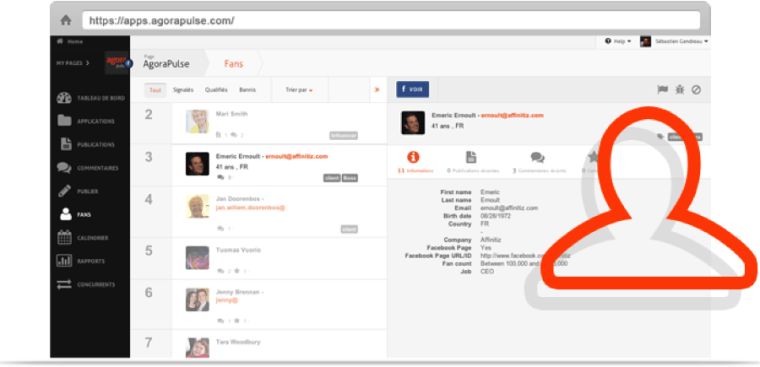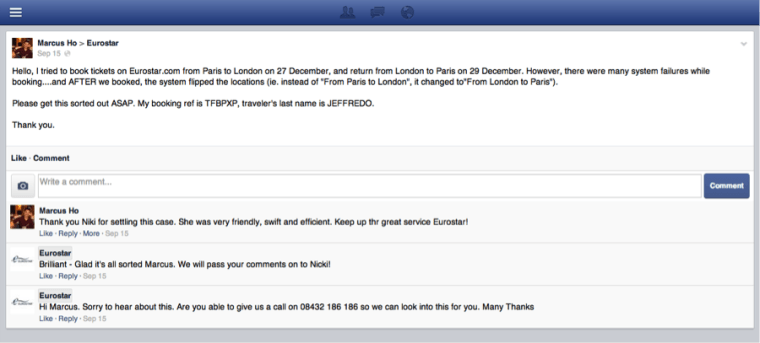What could be better than having more customers? How about having loyal customers who constantly buy from you!
As business owners, most of us understand customer loyalty is important, as they can bring in a constant source of profit and income. Therefore, we are always seeking new ideas on how to boost customer loyalty.
According to the research done by Customer Service Institute on customer retention, 65% of a company’s business comes from existing customers. Furthermore, it is often cheaper to market to existing customers. It can cost 5 to 8 times more to attract a new customer than to keep an existing one.
As shown by the statistics, selling to existing customers and getting your existing customers to buy again makes business sense. As existing customers, they have already shown interest in your products.
Businesses are always trying to boost their customer loyalty. For example, traditional businesses use loyalty cards, where the customers gain points for purchases, which they can then exchange for gifts or discounts.
These days, companies release smart phone apps to boost their customer loyalty. For example, Shopkick Local, a location-based app, rewards shoppers for simply visiting the stores. Giants such as Target, Best Buy, and Macy’s are using it to provide additional value for their customers.
Most businesses have gotten onboard with the unavoidable rise of social media. When looking to boost customer loyalty, social media has offered companies one of the easiest ways to do so.
One of the many successful companies that have struck winning strategies on social media, Whitehall Lane Winery has not only managed to increase their customers dramatically, but also increased their club member retention to over 99% each month! Using social media, they are able to reward loyal fans, educate fans about wine, and communicate with their customers.

With the increased efficiency and engagement on social media, companies can boost customer loyalty in 3 simple ways.
Engage Top Most Engaged Fan
On social media, customer loyalty can be translated to engaged fans and users on your brand’s Facebook Page. Engaged fans are the users who constantly like, comment, and share your content or posts. They do so because they like your brand and are interested in buying from you. Many of them are your existing customers.
 AgoraPulse is a social CRM platform that allows you to discover your most engaged fans based on interaction with your Facebook Page.
AgoraPulse is a social CRM platform that allows you to discover your most engaged fans based on interaction with your Facebook Page.
You have spent time and money on good content and building your social media pages. It would be a pity if you do not utilize the information and relationship to further profit your business.
I once showed my business’s top 20 engaged fans to a particular client in the business of distributing a very well-known haircare product across Asia. With the information, they have managed to save more than $50,000 in expenses.
How?
The client was quick to utilize the information by inviting their top 20 most engaged fans (not surprisingly, all of them were ladies) out for a Sunday brunch. During the brunch, they distributed a couple of their sample hair care product and asked them to test them out. In the following months, some of them sent in their positive feedback about using the sample products and the brand making an effort to engage all 20 of them.
With your brand champions sharing the privileges they have gotten, other connected customers become more active to enjoy those privileges.
The company has also relied on this same group of top engaged fans when conducting focus groups. Through leveraging these relationships, the company was able to save more than $50,000 in expenses. When there were questions or negative feedback on their Facebook page, one of these top 20 most engaged fans actually answer on the company’s behalf!
Getting Your Customers To Write On Your Wall

The CEO of Procter & Gamble once developed framework about how individuals make purchase decisions on a consumer level; consumers like you and me. It starts with the Stimulus, when the consumer sees an advertisement in the newspaper or watches a commercial on television. It stimulates our mind by informing us about the special event or promotion regarding the brand.
If you decide to go into the store, it is the First Moment of Truth, defined as the first time you see or feel the product at hand, before making deciding on buying it or not.
Lastly, the Second Moment of Truth is when you actually buy the product and experience its uses.

Google came up with a new model of the framework that takes online selling and buying into account. They have included a Zero Moment of Truth, which is right after Stimulus. The Zero Moment of Truth happens when someone uses the product and leaves reviews of it online.
Imagine a scenario where you are booking a hotel online. Before confirming the booking, we often read reviews about the hotel. Similarly on Amazon, buyers often read reviews before making purchases. The anonymous reviews have led to Amazon’s rise to fame, as buyers feel more assured with the inputs of other consumers; consumers like you and me. 67% of their visitors rely on the anonymous reviews to aid their purchase decision. That’s what has made Amazon so successful.
Consumers like to have as much information about the product first before deciding whether to buy. With the Internet, consumers search for more information and reviews. Therefore, it is important to get your existing customers to write on your page.
For example, imagine you are looking for a spa to go to and you stumbled upon the Facebook page of Healing Touch Singapore.
 Healing Touch Singapore has more than 40,000 likes. More importantly, they get fantastic reviews of their services almost every single day! As a consumer, seeing such reviews makes me more inclined to book my spa sessions with them, and I believe anyone would feel the same way, which shows the power of reviews towards boosting customer loyalty.
Healing Touch Singapore has more than 40,000 likes. More importantly, they get fantastic reviews of their services almost every single day! As a consumer, seeing such reviews makes me more inclined to book my spa sessions with them, and I believe anyone would feel the same way, which shows the power of reviews towards boosting customer loyalty.
Answer Comments or Complaints on Social Media Quickly
All customers enjoy good service. It is common to hear people complaining about the terrible service they experienced. Many complaints focus on excessive time spent waiting on the telephone for customer service.
Consumers expect instantaneous service on the phone and they would expect the same on social media. The failure to provide swift services on social media often leads to even more anger, and has the potential to go viral should it get out of control. According to research, news of bad customer service reaches more than twice as many ears as praise for good service experience.
On the other side of the page, good service can help increase your brand advocates and turn your complainers to loyal customers. I had a favourable experience with Eurostar and their wonderful customer service, and they have managed to turn me into their loyal customer.

I had an issue when I was booking the train tickets from Paris to London, and I needed it fixed fast. When I took it to Eurostar’s Facebook page to address the problem, they were quick and efficient in their service. They provided me a number to call, and when they picked up, the servicer was well aware of the problems I faced and sorted it immediately.
Their sincere services when I had a problem have managed to win me over. To boost customer loyalty on social media, a swift and sincere service is very much valued by customers. By resolving a complaint in the customer’s favour, 70% of them will do business with your company again.
In conclusion, consumers often seek additional value from their purchases, outside of the innate benefits of the product. By providing these value-seeking customers with more benefits, you can increase the likelihood of their continued business, and enjoy the increased profit from your expanding customer base.
Image Credits
Featured Image: Jayson Photography via Shutterstock
Image #1: Google
Image #2: Google
All screenshots taken October 2014





![AI Overviews: We Reverse-Engineered Them So You Don't Have To [+ What You Need To Do Next]](https://www.searchenginejournal.com/wp-content/uploads/2025/04/sidebar1x-455.png)